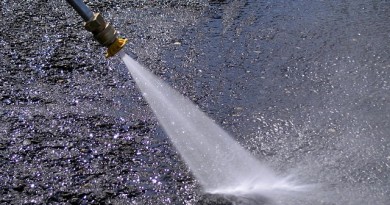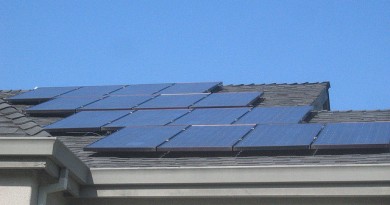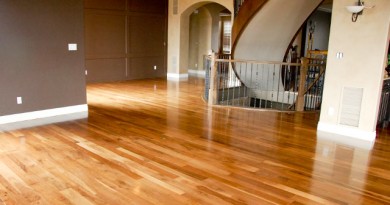How Much Does A New Furnace Cost?
As the temperatures begin to drop, and the summer turns to fall, more than a few homeowners will come to discover that their furnace is no longer operational. Due to improvements in technology and energy efficiency, it also might be a good idea to replace any furnace that is more than twenty years old. Replacing a furnace can be costly. A little education will go a long way towards helping you make the best and most economical choice for a new furnace.
Average Furnace Cost
Calculating average furnace cost is difficult because there are so many different choices available. Simple wall or floor unit furnaces can heat a small home on their own. A larger home, however, requires a larger furnace with ductwork to distribute the heat throughout the house. New furnace prices are also affected by their efficiency. The higher the energy efficiency, then the higher the cost of a new furnace will be. Government programs help to defray the cost of a new furnace if you choose a high efficiency model.
Electric Furnace Cost
With the rise in gas prices, more inquiries are being made regarding the installation and use of electric furnaces. However, even with the recent increases in gas prices, the least efficient way to heat a home is with electricity. Before deciding to switch to electric heat, you need to know how much you are paying per kilowatt hour for electricity, and then you need to know how much electricity it takes to operate an electric furnace. To heat a 2000 sq. ft. home, it takes 26.5 kilowatts an hour. At a cost of 10 cents per kilowatt hour (which is a relatively low estimate), running this furnace for 10 hours a day will cost $794 a month.
Gas Furnace Cost
Even with rising gas prices, gas heating is more economically efficient than electricity. The rising cost of fuel usually correlates with a rise in the cost of electricity. Adding to the savings is the fact that electrical generators only convert about 30% of the fuel’s energy into electricity, while a gas furnace will convert much more than that. New furnace prices for a small gas furnace are $1000 to $1500. Installation adds $1000 to $2000 to your new furnace cost.
Oil Furnace Cost
Newer oil furnaces have an efficiency rating of 85%. This means that they convert 85% of the energy of the oil into heat. The cost of a new furnace that burns oil is about $5000 installed. Smaller models might cost only $2000, but new furnace prices for larger oil furnaces can be as high as $10,000 installed. It is worth noting that a new chimney liner might be necessary with the installation of a new gas or oil furnace. For a gas furnace, the can cost as much as $700. For a fuel oil furnace, the price can be as high as $1500. Another added cost is the removal of the old fuel oil tank. For basement tanks, this can be done for $500 to $1500 depending on the size of the tank and complexity of the removal. Underground tanks are more difficult to remove, costing $1500 to $3000.
Forced Air Furnace Cost
The most common heating system is a forced air central furnace. Installing a mid-efficiency unit costs about $5000, provided that there is usable existing ductwork. New furnace cost for a high efficiency unit is about $7000. If a system complete with ductwork is needed, new furnace prices will be $14000 or more, with an added $1000 for a high efficiency model.
Geothermal Furnace Cost
Geothermal heating is a highly efficient method of heating a home, but the initial costs can be higher than the average cost of a new furnace. A geothermal heat pump runs from $3500 to $7500. The total cost of installation, including excavation, is $10,000 to $25,000 depending on how deep the pump and pipes need to be. With increases in efficiency, the energy savings realized in 5 to 10 years will pay for the unit, which has an estimated life of 25 years.
Water Furnace Cost
Newer water furnace models are available with efficiency ratings as high as 96%, which qualify them as Energy Star units. Energy Star provides tax credits for the purchase of high efficiency appliances. These high efficiency models cost about $2500.
Carrier Furnace Cost
One of the most reputable names in home heating systems is Carrier. Carrier’s Infinity series are among the most energy efficient units on the market. Their highest efficiency model is the Infinity 96, running at 96% efficiency. This is an Energy Star model, qualifying for tax incentives including federal tax credits and local utility rebates. New furnace prices for an 88,000 BTU unit are $2600 to $3000. There is a lifetime warranty on the heat exchanger, and the other parts are covered by a limited 10 year warranty.
Trane Furnace Cost
Another highly reputable name in home heating is Trane. They also have models that have efficiency ratings exceeding 90%. These systems will lower your home heating bill by 60% or more. An 80,000 Btu / 3 ton Trane Two-Stage XV95 gas furnace costs about $2500.
Residential Vs Commercial Furnaces
Home furnace cost is much less than the new furnace cost for a commercial building. Government regulations are much more stringent with commercial buildings. Also, homes are usually much smaller, requiring less ductwork and smaller furnaces to efficiently heat the space. Businesses will also be more willing to install the highest efficiency model possible, expecting the future energy savings to make up for the cost of a new furnace.
High Efficiency Furnace Cost
The new furnace cost for a high efficiency model is higher, but the energy savings are substantial enough that they pay for themselves in a few years. For a central heating system, a mid-efficiency unit will cost about $5000, which is about twice the cost of a regular model. A high efficiency furnace, with efficiency ratings of 90% to 97%, can cost $7000 to $10,000. This all depends on the existence of ductwork. Adding to the efficiency savings is the tax credit for purchasing a high efficiency furnace.
95% Efficient Furnace Cost
Older furnaces have an efficiency rating that usually reaches a maximum of 70%, but can be as low as 56%. If you currently have a 56% efficiency furnace, upgrading to a 95% has dramatic effects. You will reduce your home’s carbon emissions by 1.5 tons with a gas furnace and 2.5 tons with an oil furnace. This upgrade will also save you 42% in heating costs. That assumes that your old furnace was the right size. Most older furnaces were too big for their homes, so the energy savings could be even greater!
Furnace Ignitor Cost
Installation of a furnace ignitor can cost about $100. The life of an ignitor can be reduced if the furnace is using too much gas pressure, or if it is in a dirty environment (close to laundry appliances, for example). Ignitors alone cost about $35. Installation is not too difficult. If you are mechanically inclined, then keeping a spare ignitor on hand is a good idea in case yours fails during the winter.
Furnace Humidifier Cost
Winter air tends to be dry, aggravating colds and causing chapped lips. A furnace humidifier will humidify the entire house, negating the need to purchase small humidifiers for each room. A standard unit costs $300, and installation costs $300 as well, bringing the total to $600. Steam humidifiers cost $1000 more, with an extra $1000 for professional installation.
- 704SHARES






